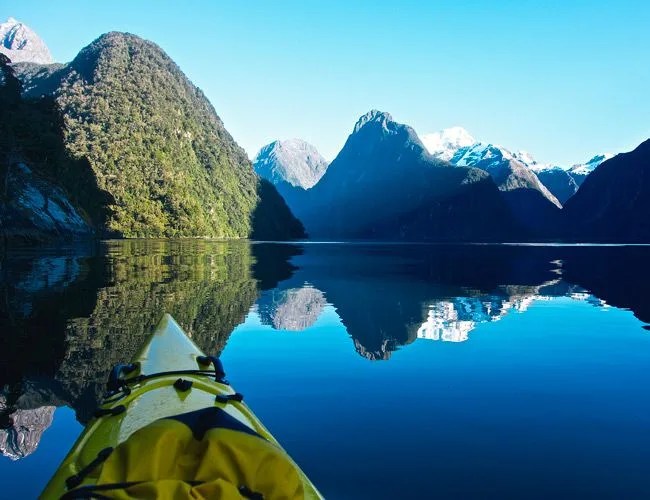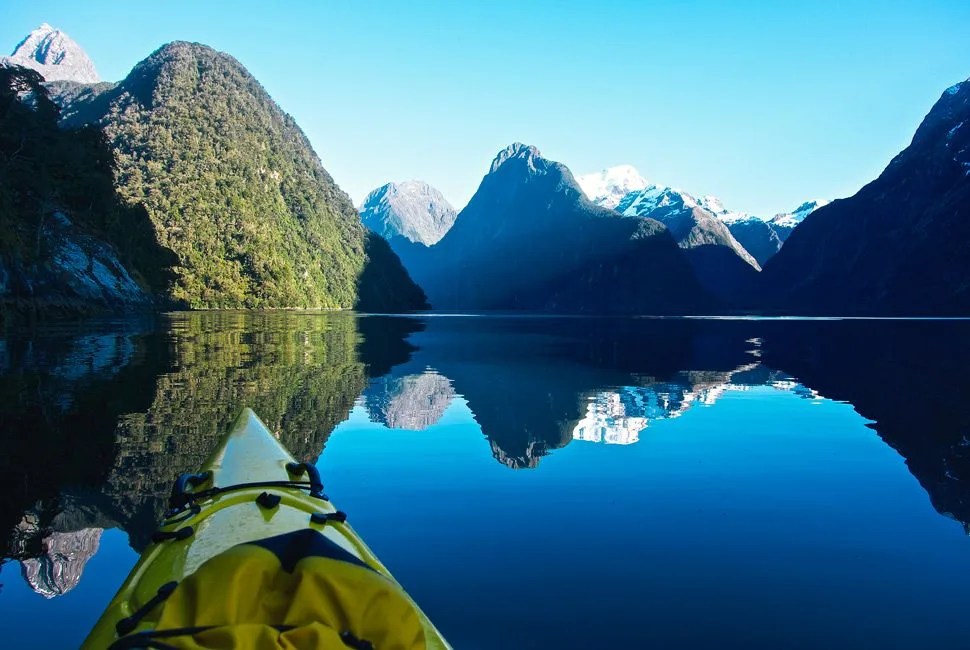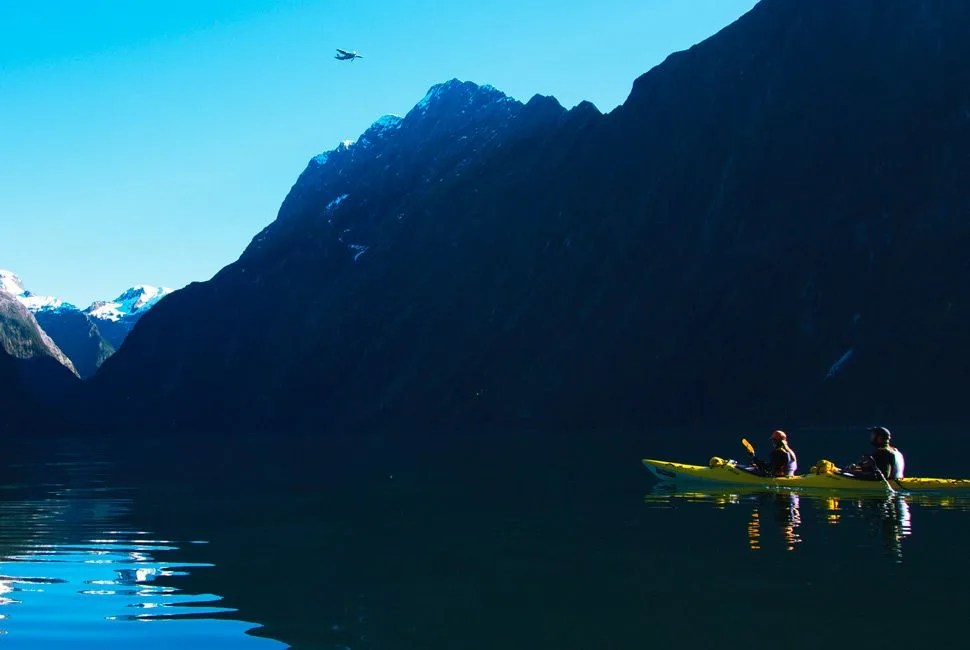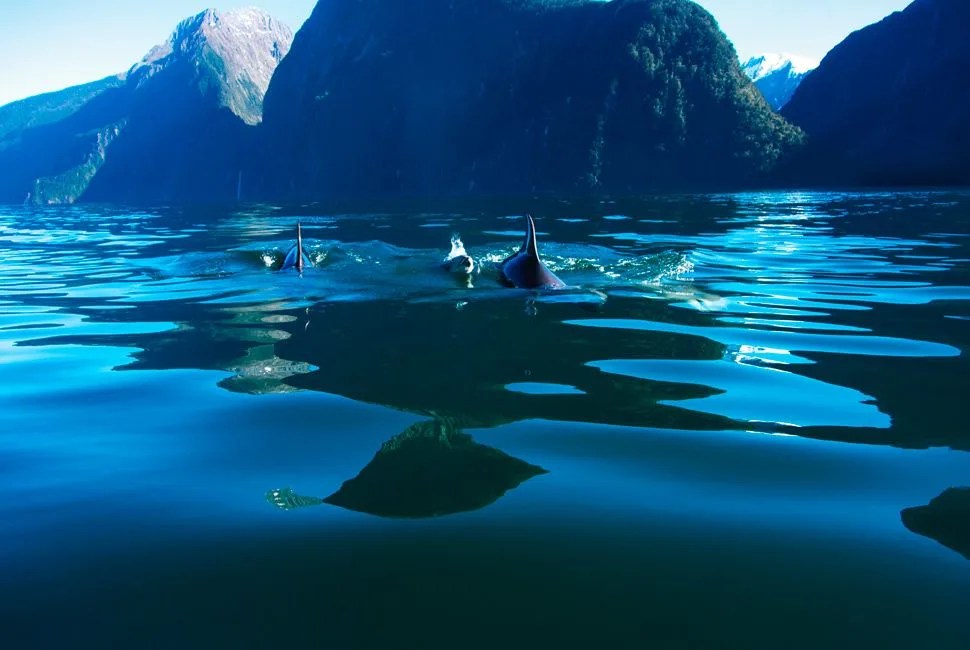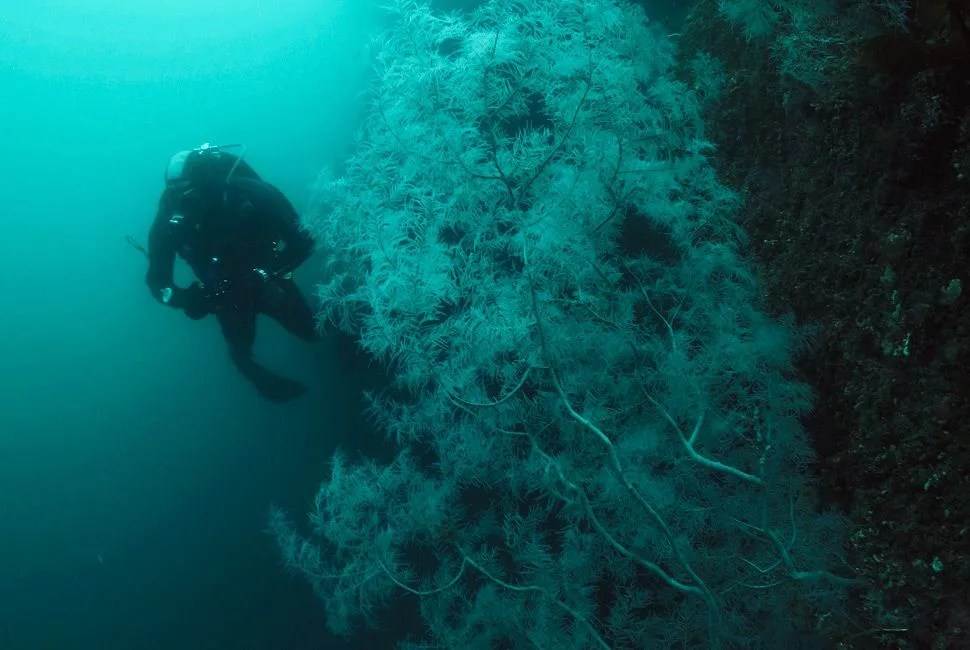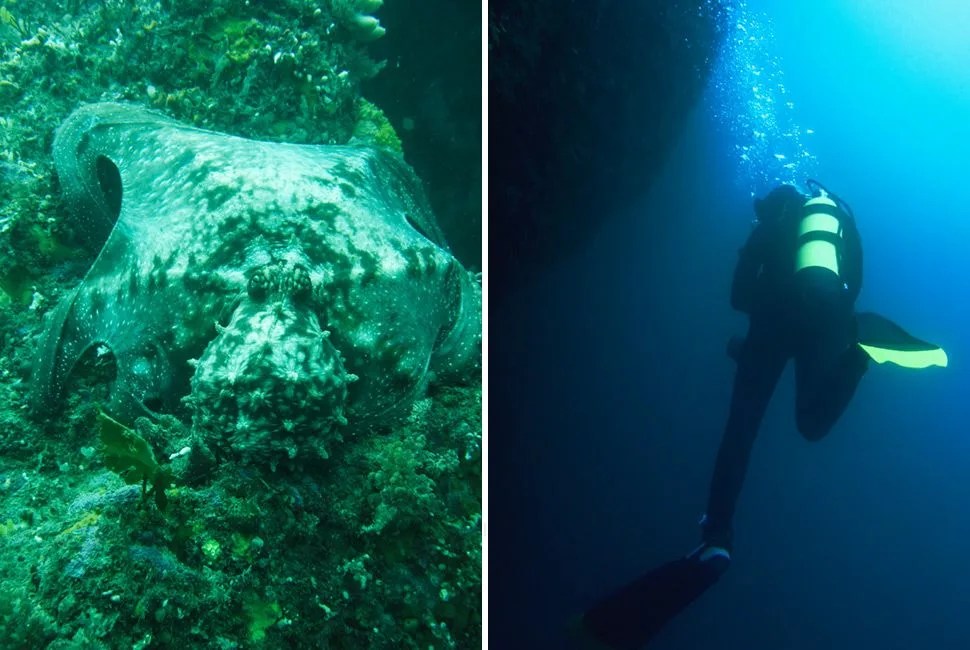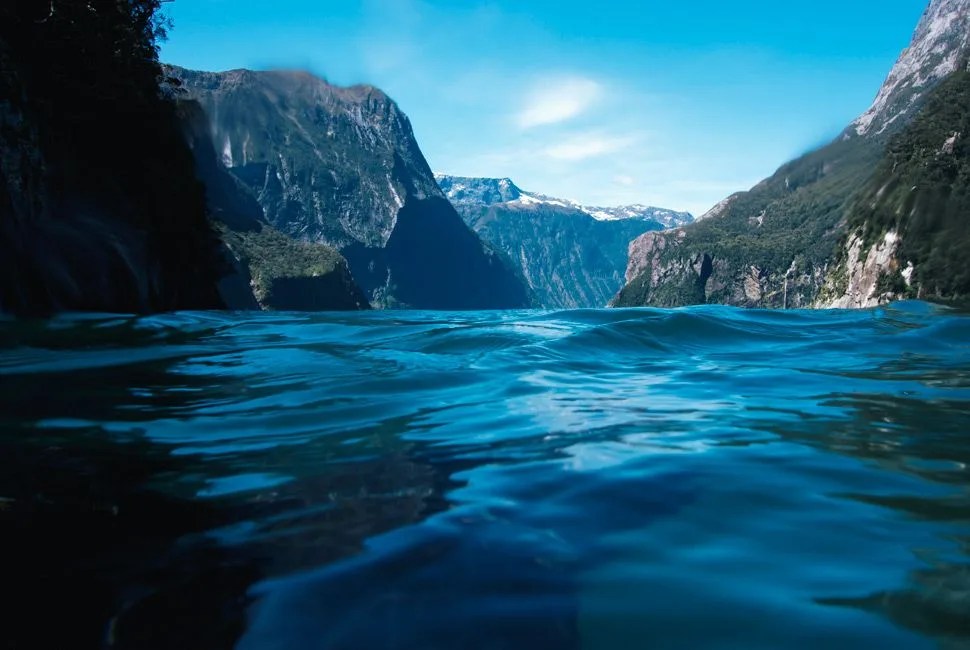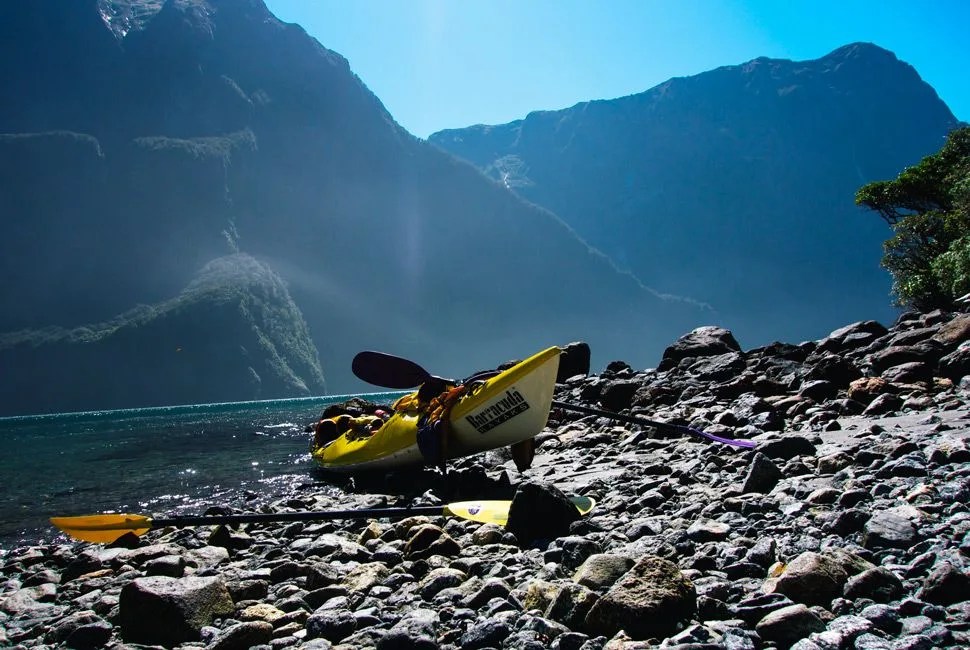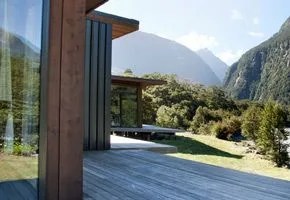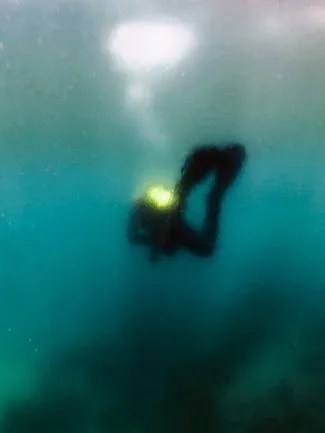13 photos
The end of the Milford Track, New Zealand’s famous 34-mile “Great Walk” would be a wonderful place to linger if it wasn’t buzzing with sandflies. The crisp sea air and views of peaks descending directly into a deep fjord is a landscape photographer‘s dream. And after four days of backpacking from the shores of Lake Te Anau through avalanche “slips” and over a snowy mountain pass, the sight of Milford Sound was a welcome one. But this spot, where the trail dead-ends into a crude dock, is aptly named “Sandfly Point”, and after a quick hero selfie, I hustled into the hikers’ shelter to await a boat transfer across the Sound. An hour later, we were deposited back into the relative civilization of Milford and my smelly hiking companions boarded a bus to head back to Queenstown for hot showers and cold beers. But I hadn’t had enough of this place and stayed behind. I had plans to cool off and take a load off my feet, literally, with two days on and under Milford Sound’s icy waters, scuba diving and kayaking, sandflies be damned.
Milford Sound is not actually a sound, strictly speaking. It is in fact a fjord, as this region’s Anglicized name, “Fiordland” suggests. Instead of an ocean inlet, the 4,000-foot mountain walls were carved out by glaciers, which finally broke through to let the Tasman Sea flood in. The resulting cirque of peaks, steep walls and waterfalls are a coffee table book come alive and a magnet for photographers, who come in throngs to frame Mitre Peak across the water at sunset. Excursion boats leave the harbor hourly bearing hundreds of snap-happy tourists who brave the notorious wind and rain of Milford to take pictures of Stirling Falls, the resident populations of fur seals and penguins or, if they’re lucky, the schools of dolphins that sometimes frequent the Sound.
I swam closer and saw a massive octopus shimmying along the wall, its well-camouflaged body pulsating to match the dappled sunlight that filtered down.
Milford Sound is one of the rainiest places on earth, receiving over 22 feet of precipitation annually, evidenced by the coating of moss and vines that grows on just about anything that doesn’t move along the Milford Track. Given its rainy reputation, I was pleasantly surprised to find my dive day dawn without a cloud in the sky. As I suited up on shore, the sandflies were out in force, nipping at any exposed skin and hovering in a cloud around my head, defying the toxic coating of DEET I had bathed in only an hour earlier. Shimmying into a seven-millimeter neoprene wetsuit is never a pleasant or quick task, but the relief it provided from the biting insects inspired me, and I donned the hood, leaving only my eyes and nose exposed.
Diving in Milford isn’t exactly tropical vacation diving; the 45-degree water requires a thick exposure suit and a lot of lead in your belt. The advantage of this of course is that if you’re hearty enough to do it, you’ll have the whole place to yourself. There isn’t a row of dive shops there to choose from, either; Descend Scuba Diving is the only game in town, and their specialization in this niche diving shows in their knowledge and skills. As I swatted bugs away, skipper Lance and his partner, Simone, calmly loaded tanks in to the 21-foot Pacific Runner, their purpose-built dive boat, and soon we were motoring out onto the glassy Sound, a light breeze doing away with the sandflies.
We reached our dive site and Lance cut the boat’s engine. The thousand-foot depth meant that anchoring or mooring is impossible here, so Lance would stay onboard the boat while Simone and I dove. He helped me don my tank and escorted me to the transom. We weren’t far from the fjord walls, and as I cleaned my mask, on a nearby rock shelf I saw a fur seal sunning itself. It eyed me, this clumsy creature, as I stepped off into the water with much noise and splashing. Simone soon joined me and we let out air and descended together.
